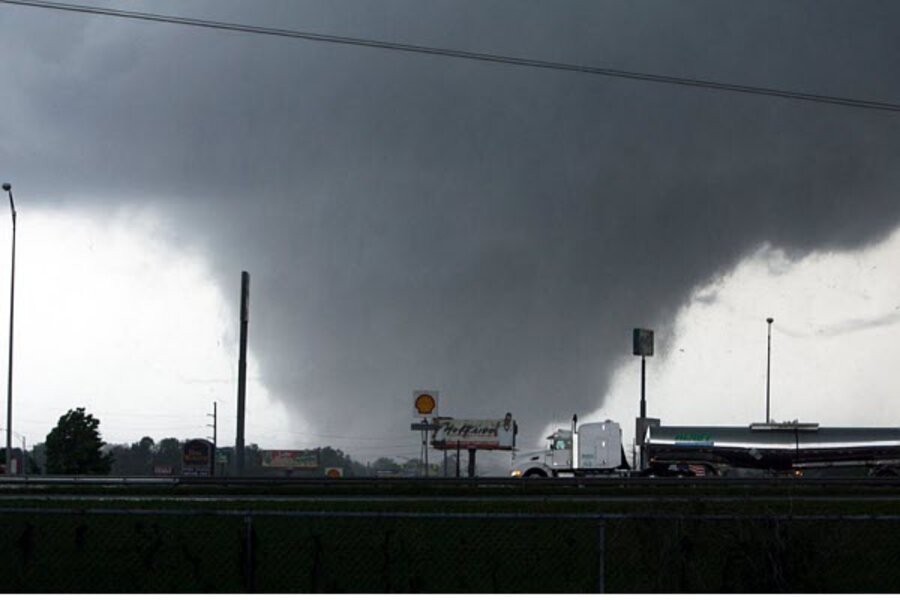Tornado threat: How are January tornadoes possible?
Loading...
| Chicago
Tornadoes in January? A wide area of the central and southeast U.S. faces this unusual threat as an approaching cold front clashes with unusually warm air, a meteorologist said on Tuesday.
The first tornado warning of the approaching storm was issued on Tuesday for western Missouri, said meteorologist Bill Bunting at the National Weather Service Storm Prediction Center in Norman, Oklahoma.
A warning is intended to signal residents to take cover because a tornado could be forming. A less urgent tornado watch is in effect for a region from extreme northeast Texas through virtually all of Arkansas, western Tennessee and extreme southern Illinois.
"It's a little unusual," Bunting said of the tornado threat. "We don't see this every winter with this kind of warmth preceding a storm system."
Bunting said a lesser threat of severe storms and possible tornadoes extends over a huge area as far north as Chicago and extending east to Cincinnati, Ohio and Nashville, Tennessee and south into Mississippi, Alabama and Louisiana.
"This weather system will reach its peak intensity this afternoon into the evening. It will only get stronger and cover a larger area over the next 12 to 18 hours," he said.
In Arkansas, forecasters predicted winds of up to 80 miles per hour and possible tornadoes throughout the state on Tuesday night.
The National Weather Service made a special release of weather balloons in Arkansas on Tuesday because of the threat.
The tornado threat was the latest development in a turbulent weather pattern.
Several cities set records for warmth on Monday and a few more record high temperatures were expected on Tuesday, although there were more clouds overhead to moderate temperature, Bunting said.
The high reached 74 degrees Fahrenheit in Kansas City on Monday, encouraging residents to go outside for a winter round of golf or to a park wearing shorts and flip flops.
By midmorning on Tuesday, the temperature had fallen to 43 degrees in Kansas City and was expected to fall to 28 overnight with a chance of snow.
The temperature was 61 degrees as far north as Chicago on Tuesday and the warmth extended into Indiana.
"The tornado and damaging wind threat will continue well after dark tonight," Bunting said, adding that people should be aware of the weather and be monitoring media reports.
Tornadoes are most dangerous after dark when residents are sometimes unable to see the approaching storm in time to take cover.
(Reporting By Greg McCune; Additional reporting by Suzi Parker in Little Rock and Kevin Murphy in Kansas City; Editing by Leslie Gevirtz)





